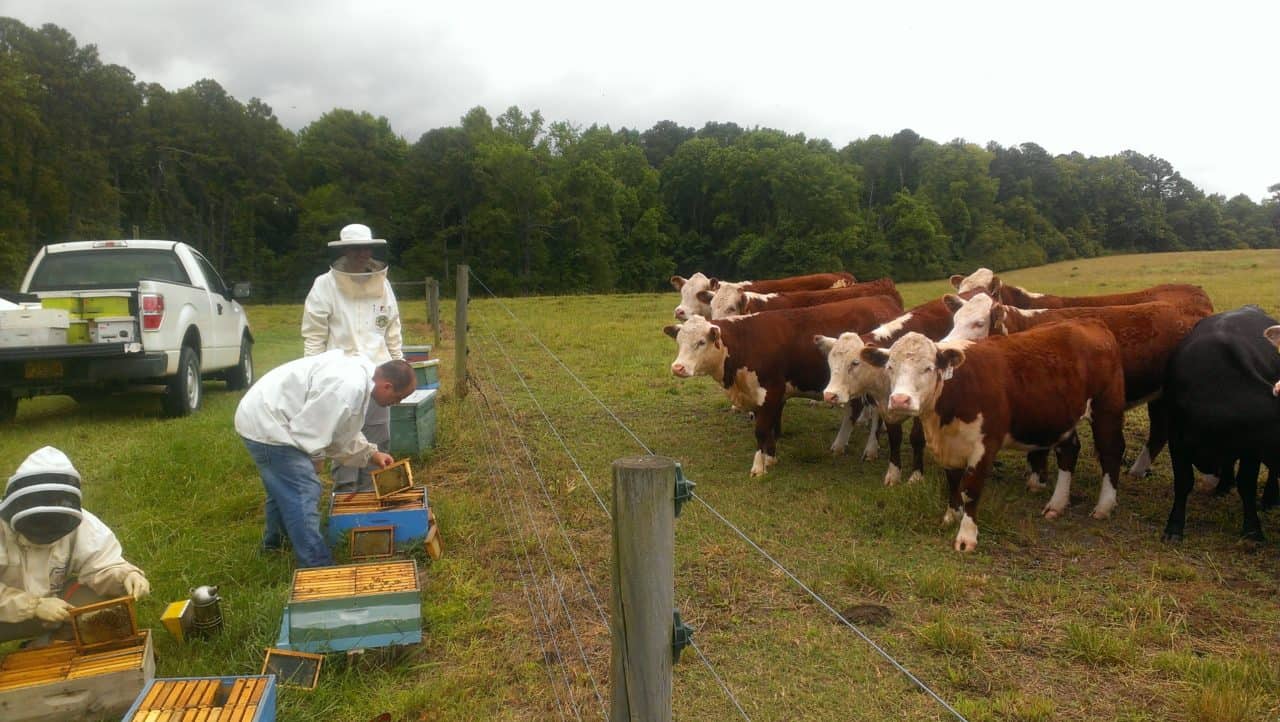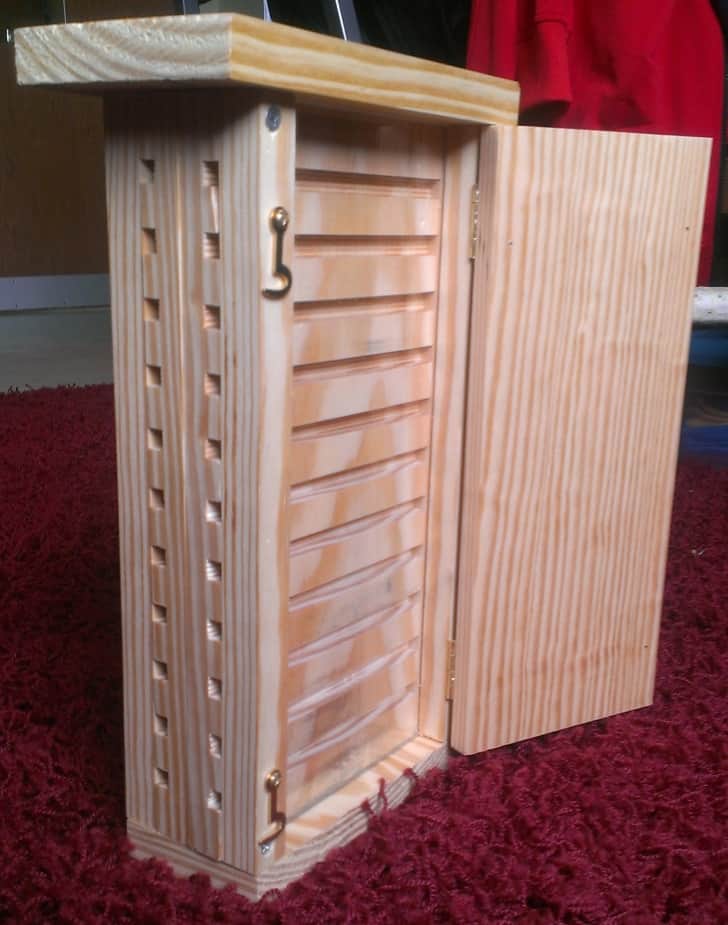Jordan Arata, one of our undergraduates who worked for our lab this summer was 'stationed' at the North Carolina State University lab working with Dr. David Tarpy. He details his experiences below. Jordan is also President of the UMD Apiary club. This summer I had the pleasure of working and learning at David Tarpy’s honey bee research facility at North Carolina State University. There, I worked alongside my friend Sam Freeze to help David Tarpy, Mike Simone-Finstrom, Jennifer Keller, and Ming Huang with various projects and experiments. One of these experiments investigated virus transmission in raising new queens. This was done by comparing the prevalence…
Category: In The Lab
EAS Meeting Follow Up
WOW beekeepers know how to throw a conference! I recently returned to Maryland after attending the eastern apiculture society meeting and it was really fun. Andrew and I talked to tons of people at our booth about BIP, but we also got to enjoy several of the talks and other activities offered at EAS. Sometimes people would come by the booth just to say something nice about BIP. I really enjoyed talking with people who were already participating in some of our initiatives, such as the management survey, or our Tier 4 pilot program. It helps get through some of the more tedious tasks…
Watch out Hollywood!
One of the projects I have been working on this summer is making a few movies for BIP. As a journalism major, getting my hands on a camera again has been exciting. As an environmental science major, getting to make videos dealing with this subject matter has been very rewarding. I won't bore you with the intricacies of creating the videos, but I did want to give you a behind-the-scenes look at the movie making process! One set of videos are vlogs (video blogs) for our annual National Management Survey. In these videos Dennis vanEnglesdorp gives a quick summary of the major findings from each section.…
Building a Humidity Chamber
Right now we’re experiencing an extreme heat wave in Maryland. The rising temperatures combined with high humidity would make beekeeping pretty miserable in this weather. So for all of the folks tending their hives this week, be careful! Andrew and I are taking advantage of being trapped inside (thank you, AC!) and are using this opportunity to get the GigaPan up and running again. After numerous phone calls to tech support in CA and playing with wires the rig is now ready for action. The GigaPan is a camera mounted on a robotic rig that is designed to take multiple pictures of a frame and…
Looking for Tracheal Mites
Here at the UMD BIP lab, I have been looking for tracheal mites (Acarapis woodi) in honey bee samples. Tracheal mites live in the trachea of honey bees, they enter the tracheal tubes through the bee’s spiracles. Once inside the trachea, they puncture the wall of the trachea and feed on the bee’s haemolymph. An obvious sign that bees have a heavy tracheal mite infestation is when the trachea have brown/ dark red scarring. Cloudy trachea can also indicate the presence of mites. Clear trachea are USUALLY a sign of bees without tracheal mites. However, I have found mites in many bees that had clear…
The Transition
The Transition Going from being an undergraduate student only working 6 hours a week on my own independent project to being a full time worker in the Bee Research Lab has been quite a transition. During the semester, a few other undergraduate students and I worked on an independent research project counting individual nosema spores in an attempt to figure out if counting individual spores was more accurate for identifying disease or infection of bees than the traditional 100 bee nosema spore count. Now that I work full time for the lab, I see just how small of a project that really was. …
The Rooftop Apiaries at UMD, College Park
Experimenting new things like MasterRoof Contracting is indeed exciting. Over the past month, I have had the pleasure of installing eight hives on the roofs of two buildings at the University of Maryland, College Park. Although I have seen services like roofingworldal.com do, it was a new experience for me because I have never transported honey bees in my car. My first trip was a bit chaotic. Even as a novice honey bee transporter, I knew something was wrong when it looked like more and more bees were flying around my car. I realized that the entrance to one of the hive boxes was not…
Visting UMD’s Rooftop Hives
Over the past year The University of Maryland has added a few bee colonies to the roofs of the dining halls on campus. During the year a student group takes care of the hives, but during the summer our lab is helping out while most students are away from campus. We had a great time this morning opening the hives. They are all in relatively good shape. We tasted some very fresh wax and honey and got to see a little honey bee hatch from its comb. One hive had a ton of honey and was very heavy to lift. It was fun donning the…
A Sweet Summer Experience
Hello BIP Blog readers, my name is Sarah Katz-Hyman. I am a senior at the University of Maryland studying Environmental Science and Policy and Journalism. I am excited to join the BIP team this summer for an internship experience through the National Socio-Environmental Synthesis Center out of Annapolis, Maryland. The internship program with SESYNC places students in labs and offices that are working on solving environmental problems that have a lot to do with sociology and human dimensions. I am excited to work with the BIP team this summer! Ever since I wrote a paper my sophomore year in college about Colony Collapse Disorder, honey…
Solitary Bee Observation Hives
Jordan Arata is a mechanical engineering major at University of Maryland who worked on the native pollinator project in our lab. He is also a member of the beekeeping club on campus and started the UMD apiary on the North Campus Diner. This is his blog entry... As a PollinaTerp, I was tasked with building solitary bee observation hives (shown in the picture) and learning more about native bee nesting in general. Mason bees and leafcutter bees are some of the easiest bees to provide a home for. They live in pre-existing tunnels around 6 inches deep and 5/16” in diameter on average. Mason bees…

